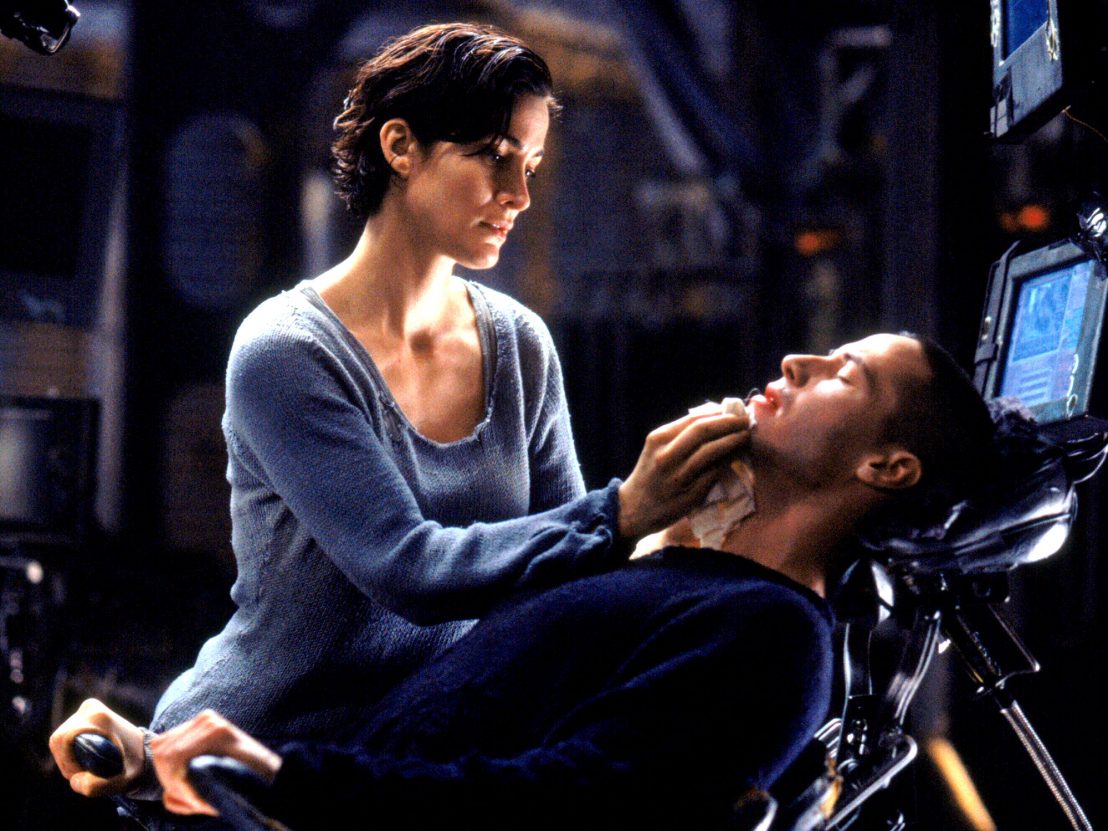
‘What is The Matrix?’ In early 1999, this question began to flutter around internet forums and flash up on TV screens, decorating cryptic posters in cinema foyers everywhere. It also sprung up in the form of a website – whatisthematrix.com – as Warner Bros amped up anticipation for a futuristic action sci-fi few knew anything about. What is The Matrix? The answer, even now, depends on who you ask.
Some see the Wachowskis’ film as a cyberpunk ‘Alice in Wonderland’, or an Asian martial arts movie transplanted into a dystopian American setting. To others it’s a philosophical meditation disguised as a slick, bullet-laden blockbuster, asking Cartesian questions about fate and free will. To this writer, a 12-year-old from a small suburban town where life seemed to unfold in bullet time, it was the most mind-blowing thing I’d ever seen.
This week marks the 20th anniversary of a modern sci-fi classic whose enduring impact on film culture not even The Oracle could have predicted. Starring Keanu Reeves, Laurence Fishburne and Carrie-Anne Moss, The Matrix swerved convention like Neo dodging bullets atop a skyscraper, bringing high-concept existentialism to the action genre.
The film hacked Hollywood, altering its code forever. It ushered in not only a new era of special effects but also a smarter, more ambitious type of blockbuster. In a time of Facebook algorithms derailing elections and online echo chambers obscuring the very notion of truth, the film’s dark warnings about the corruptive potential of technology feel more pertinent than ever.
The Matrix remains at the forefront of the public imagination. It is regularly voted among the best blockbusters ever made, and its distinct visual style shimmers through contemporary box office smashes like Inception, Doctor Strange and Ready Player One. Its influence has even reached hip hop: Kendrick Lamar, Nas, Danny Brown and Nicki Minaj are just a few to have name-checked the film and its characters in their music.
The language of The Matrix has crept into our political discourse too. Among men’s rights activists and alt-right extremists, the term ‘blue pill’ – a reference to the scene in which Morpheus offers Neo a route back to blissful ignorance – is used as a shorthand for people who deny that there’s a giant worldwide conspiracy to oppress white men, the true victims of this reality. (What the Wachowskis, who have both come out as transgender women in the years since the film’s release, make of it becoming a cultural touchstone for idiot men-babies, I dread to think.)
So how did two relatively unknown directors turn an anime-inspired sci-fi about a world enslaved by machines into a pop culture phenomenon that would resonate for decades to come? Why does The Matrix still matter?
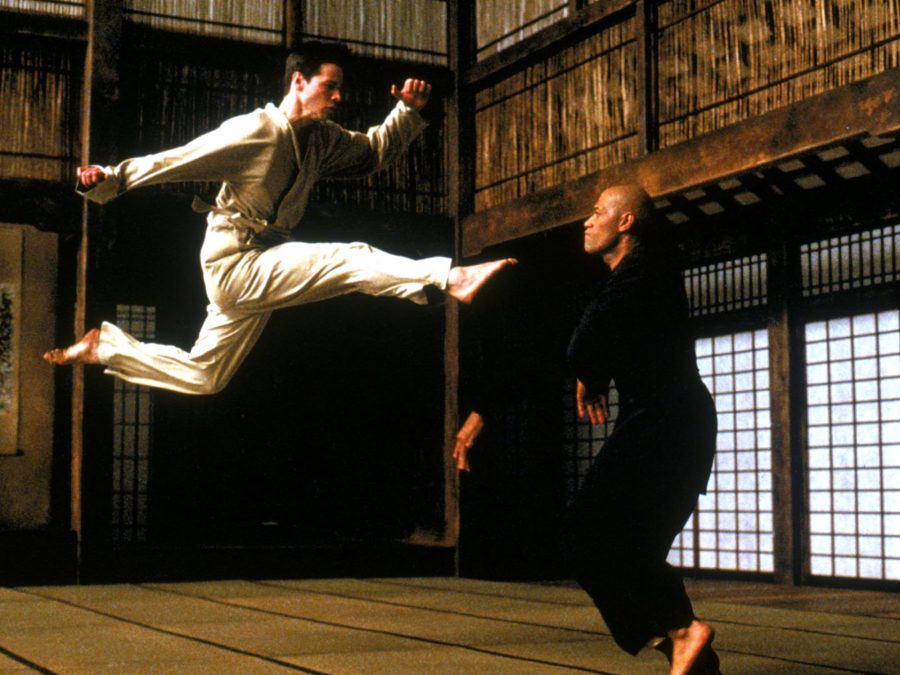
The answer in part lies in the timing. The late ’90s saw a fog of existentialist panic descend on mainstream American cinema. The new millennium was creeping ever closer, and as fears swelled about a so-called Y2K virus dropping planes from the sky and causing unprecedented chaos, Hollywood found itself swept up in the technology-driven crisis.
The Truman Show, Dark City, The Thirteenth Floor and eXistenZ each interrogate the various ways technology might disassociate humanity from itself, wedging itself between our relationships and grip on reality. The Matrix was the kung fu-kicking climax of this trend: metaphors for millennium bug panic don’t come much more screamingly obvious than the insect-like device that’s implanted in Neo’s stomach in one of the film’s most nightmarish moments.
There was also a growing concern in the news media about the amount of time young adults were spending in digital worlds. Video games had become mainstream, a major pop culture pastime for the first time thanks in large part to the PlayStation. Sony’s home console launched in 1997 and was marketed at 18-24 year olds, setting up consoles in night clubs and soundtracking games with pulsing cutting-edge techno. As graphics had grown more impressive and gaming worlds rendered more and more immersive, moral panics ensued that children were soon to be swallowed by these attractive realms of unreality.
The Matrix manifested some of this fear, of plugged-in people lost to digital unrealities, but it also assimilated a lot of video game culture – the training sequence in the dojo is shot side on like a scene from Tekken. One of the film’s quiet core attractions, the fantasy of being able to instantly ‘download’ new abilities that would otherwise require years of training, is essentially the entire thrillride of gaming. By both embracing and warning against video game culture, The Matrix tapped into a conversation that reached a violent crescendo a few months later, when video games were blamed for two teen gunmen massacring 12 students and one teacher at a high school in Columbine, Colorado.
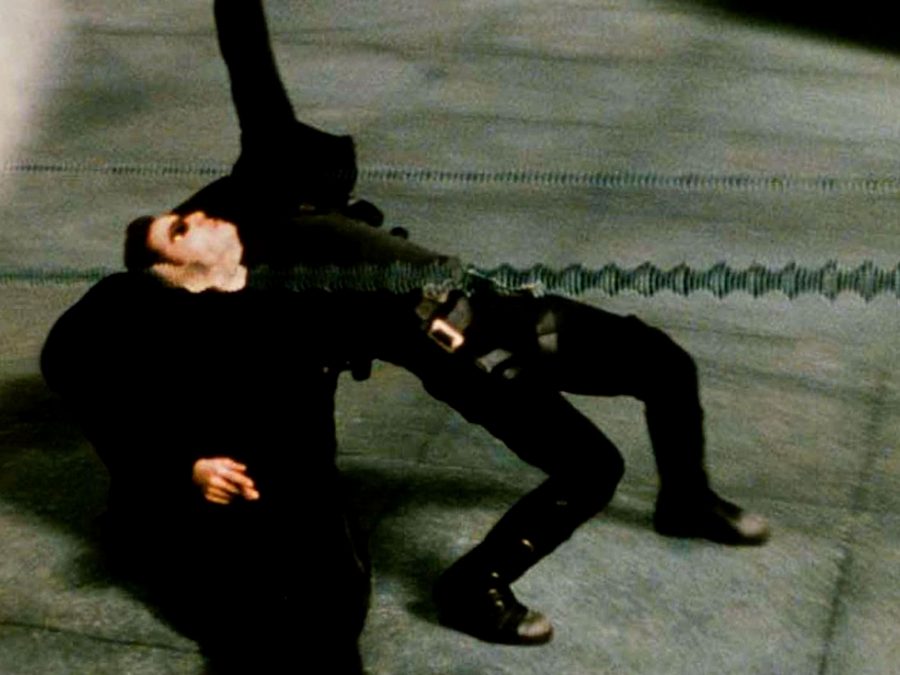
Plenty of action films boast kick-ass moments of heroes taking down faceless foes, but The Matrix’s battle scenes are choreographed liked ballets. Heavily indebted to John Woo’s Hard Boiled, the Wachowskis bring a sense of beauty to the brutality. Cameras spin elegantly around characters frozen in mid-air, introducing Western fans of action and sci-fi cinema to a very different kind of visual language.
Bullet time was more than just a flashy effect to underline the film’s futurism. As Joshua Clover points out in his BFI companion to The Matrix, bullet time was “the film’s signature not simply because of its visual ecstasy, but because of its aptitude, holding all the strands of the film together.” As Morpheus points out onboard the Nebuchadnezzar, those plugged into the Matrix perceive the year as being 1999. In truth, it’s closer to 2199. The Matrix is a computer simulation rebooted and reloaded over and over again. Bullet time reflects how humanity are a civilisation frozen in time in The Matrix, “trapped in the amber of the spectacle.”
All this gave The Matrix a momentum that carried well into the new millennium. The Y2K bug never quite materialised, but two Matrix sequels did: Reloaded and Revolutions, shot back-to-back and doubling down on the philosophy established in the first film. Actually, make that quadrupled down. Long debates about the nature of existence ensued as the Wachowskis did away with much of the action movie gloss of the original. A scene involving the Matrix’s architect was parodied by Will Ferrell, Justin Timberlake and Sean William Scott at an MTV awards ceremony. A sex scene set during a rave in Zion was met with widespread ridicule. Critics and fans were for the most part unimpressed.
The disappointment of these sequels reduced Matrix mania to a simmer. It probably didn’t help that by the early 2000s society had moved on; the Apple renaissance in full swing. In 1999, computers and the internet were still complex unknowns to vast swathes of the population, stoking a tech-phobia The Matrix benefited from. By the time the sequels came out, Steve Jobs had been appointment permanent CEO of Apple, the iMac had given home computers a clean, user-friendly makeover (“There’s no step 3!” Jeff Goldblum yells in ads designed to show off how simple they were to operate, unlike clunky, techy PCs) and iPods had become a phenomenon. Computers and the internet no longer represented the unknown. They were fun, colourful, easy.
And yet The Matrix never really went away. With every news headline about AI advances over the last decade, it’s been there: a punchline, a meme, a warning. In 2019, the idea that we’re living in a computer simulation is now a creditable scientific theory. Giant social media corporations have admitted to experimenting with controlling users’ behaviour via the content pumped into their feeds. There’s no privacy scandal we won’t forgive, no data mining debacle that will stop us from hammering our ‘like’ buttons.
What is The Matrix? “It is all around us, even now in this very room,” Morpheus intones in the film. “You can see it when you look out your window or when you turn on your television. You can feel it when you go to work, when you go to church, when you pay your taxes.” Twenty years on, it’s sure starting to feel that way.
Published 30 Mar 2019
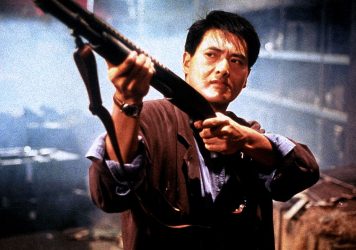
The director’s explosive spectacle deconstructs masculinity, sexuality and the action genre itself.

Our ’90s countdown kicks off with movies from Tim Burton, David Lynch and Hayao Miyazaki.
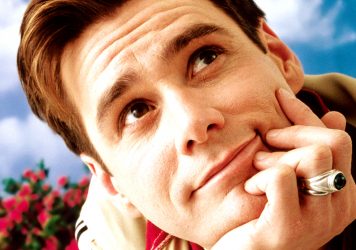
Jim Carrey’s portrayal of a man trapped in his own reality TV show remains as captivating as ever.